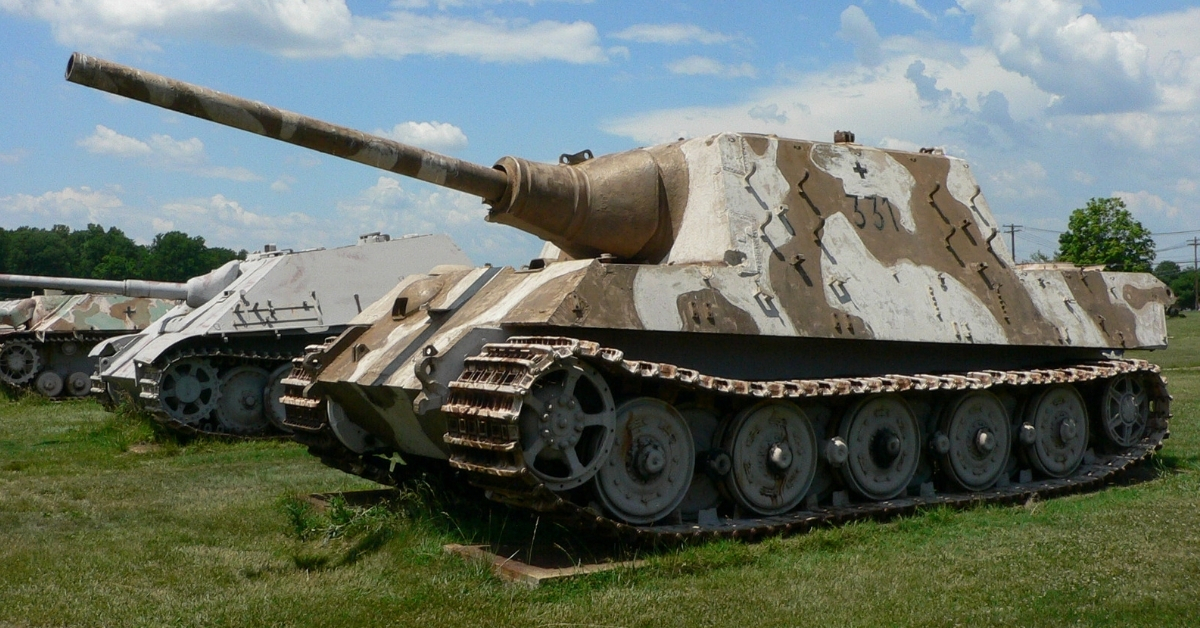The Tank Museum’s Jagdtiger has chassis no. 305004. It was one of eleven (plus an unarmoured prototype) which were fitted with the Porsche suspension system.
It was built in July 1944 and sent to the Sennelager testing ground just north of the city of Paderborn, where it was used for trials.
Towards the end of March 1945 units of the American XIX Corps, including 3rd Armored Division and the 703rd Tank Destroyer Battalion were advancing towards Paderborn. The Germans assembled as many armoured units as they could to try and fend off their attack. One of these was an improvised unit called Panzergruppe Paderborn manned by instructors and equipped with an assortment of vehicles from test units, including Tiger Is, Tiger IIs, Panthers and even an old Panzer III. It is unclear whether the Jagdtiger was also a part of this force, or whether it took any part in the fighting.
Fighting around Paderborn and Sennelager continued for around a week. Although the German forces in and around the training area put up heavy resistance, most American units simply bypassed them to the north or south. By the 5th April it was clear that the forces left had to withdraw or risk being cut off. The Museum’s Jagdtiger was abandoned and captured by the Americans the next day. It was photographed almost immediately afterwards by a photographer attached to XIX Corps.
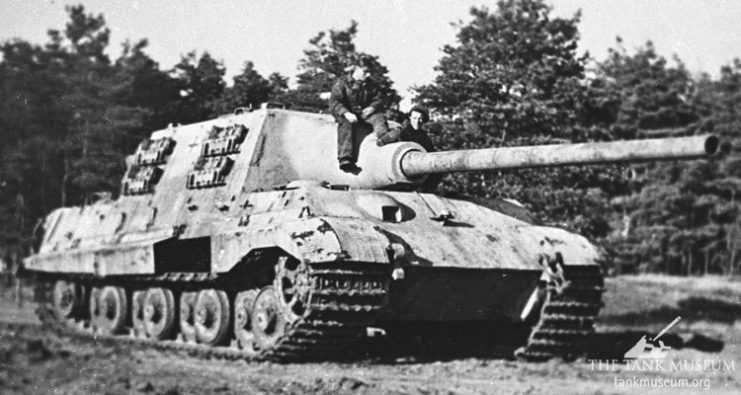
Although it had been captured by the Americans, after the war Paderborn became part of the British Zone of Occupation. Both the Jagdtiger and the Pre-production King Tiger now in the Tank Museum were seen at Haustenbeck by British Ministry of Supply Researchers on the 25th August 1945.
After being tested at Sennelager (with some of this captured on film) it was sent to the School of Tank Technology at Chertsey in the UK before arriving at the Tank Museum in 1952. It is missing its rear engine plate cover, its third suspension unit and two road wheels on its left-hand side but still retains its original Zimmerit anti-magnetic mine paste.
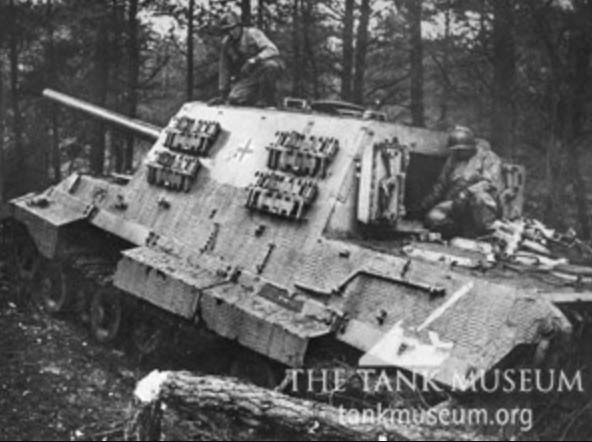
History of Jagdtiger (Sd Kfz 186)
Jagdtiger was the largest and at 70 tons, heaviest tracked vehicle to fight in the Second World War and is one of the vehicles featured in The Tank Museum’s Tiger Collection exhibition.
The front armour was almost 10 inches thick and completely proof against all Allied tank and anti-tank guns. A well-camouflaged Jagdtiger in a static position could inflict major damage on Allied tanks.
The Jagdtiger which literally means ‘hunting tiger’ was the heaviest fighting vehicle to see action in the Second World War. The project was started in early 1943, when a proposal was made to fit the 12.8cm Pak 44 gun to a tank destroyer. The chassis was based on the Tiger II, which had been slightly lengthened. This followed the series of Jagdpanzer designs which used the latest tank hulls to mount anti-tank guns in a turretless and therefore was a cheaper design.
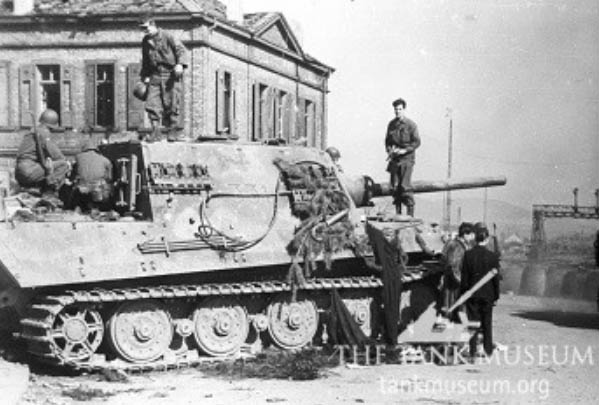
As with the Tiger II, both manufacturing companies Porsche and Henschel submitted designs. The first 11 vehicles were built with Porsche suspension, but this was considered too vulnerable and was replaced with the Henschel design.
The gun fired a 28 kg armoured piecing rounds or 28 kg high-explosive rounds, which could penetrate any Allied tank armour of that time at 1,000 meters. The engine was the Maybach P230 petrol engine, which produced 700 hp. This gave a poor performance due to the combat weight of 74 tonnes.
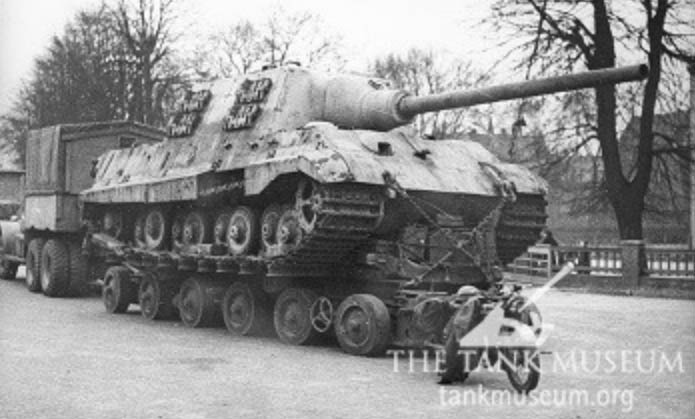
Only about 85 of the 150 Jagdtigers ordered were manufactured. The tank was plagued by breakdowns and a number of losses occurred through crew members’ inexperience.
The example housed in the Tiger Collection was captured by American forces in 1945, seen at Haustenbeck by British Ministry of Supply Researchers and used as a test vehicle at Sennelager tank training ground. It was coated in Zimmerit – a special paste which prevented magnetic charges from sticking to the hull.
A message from The Tank Museum:
“Please Support Us: As a charity, we rely on public support for all our activities. Our work is funded entirely by people like you. With your support, we can continue to create content. With the right support we might be able to do it more regularly – and can be even more ambitious. Please Click on the Banner Below.”
Thanks to the Tank Museum for this Blog, which originally appeared here and here.
